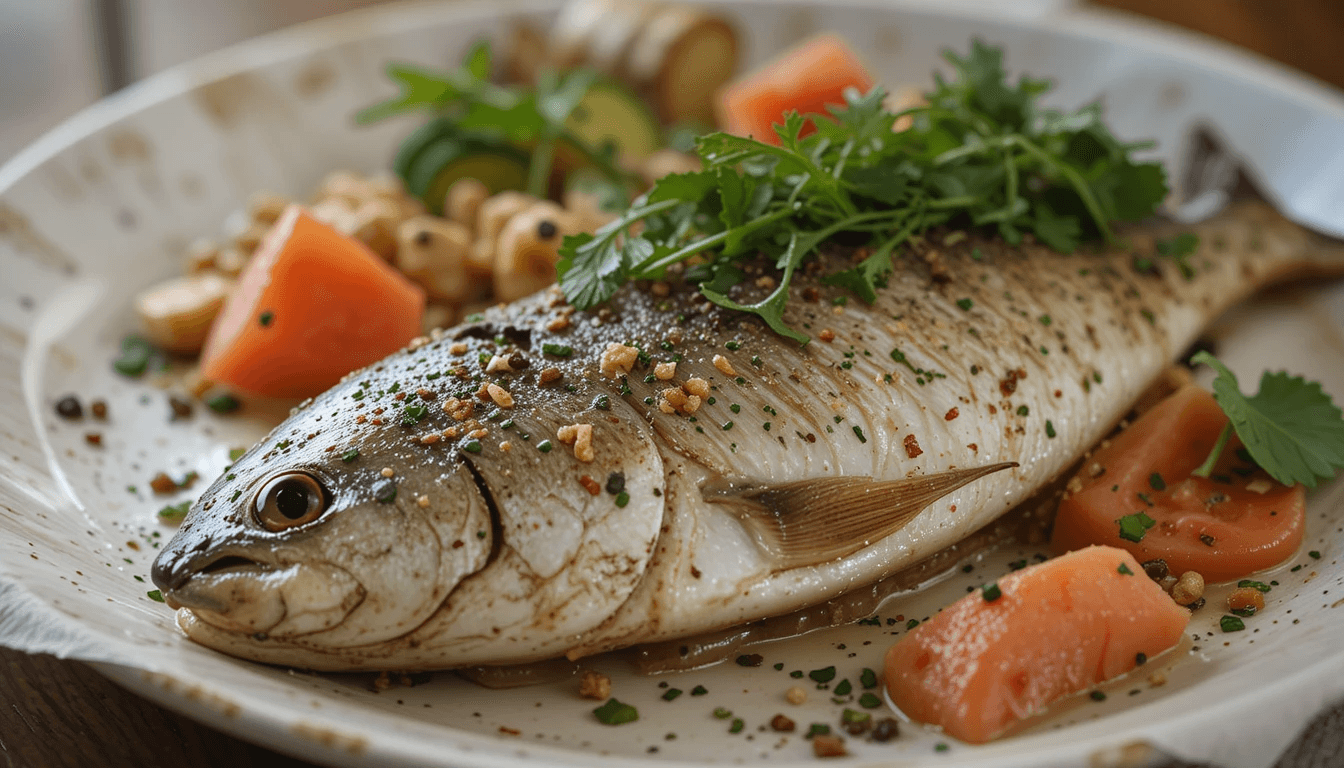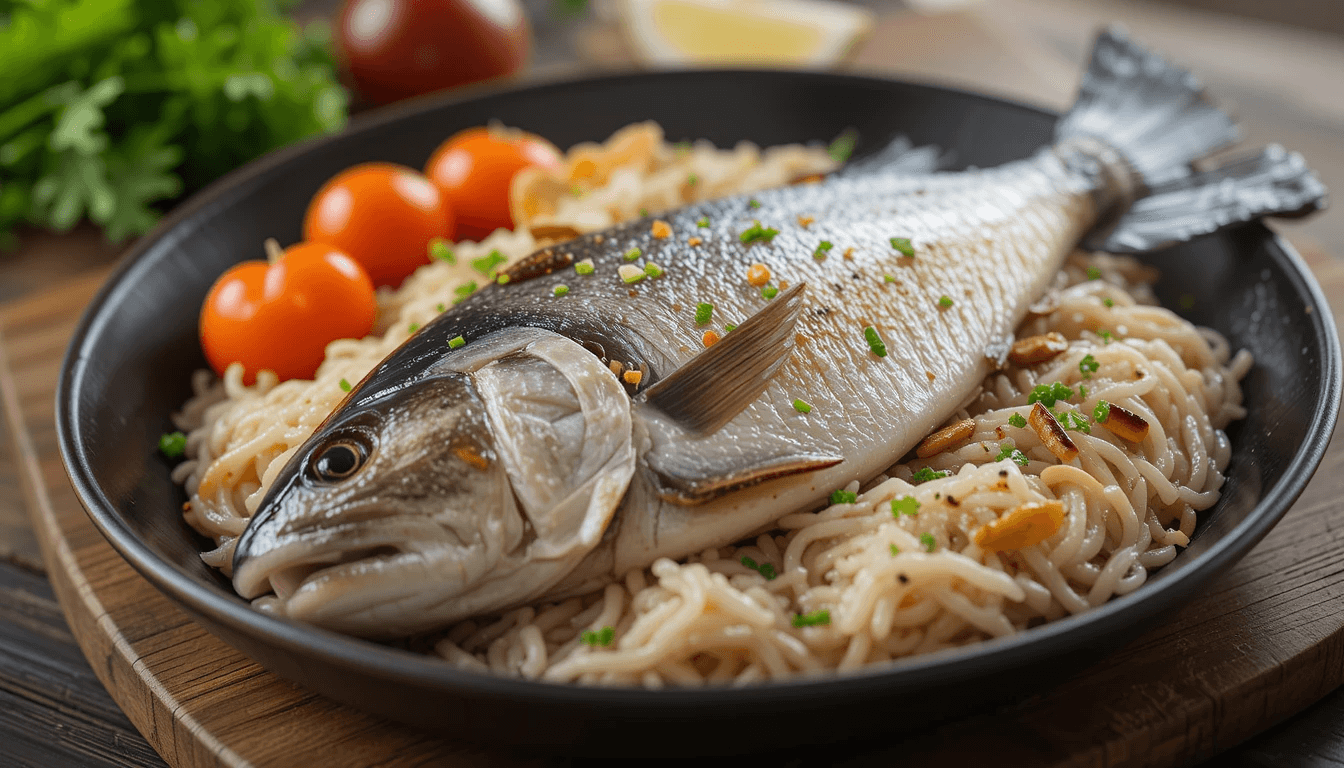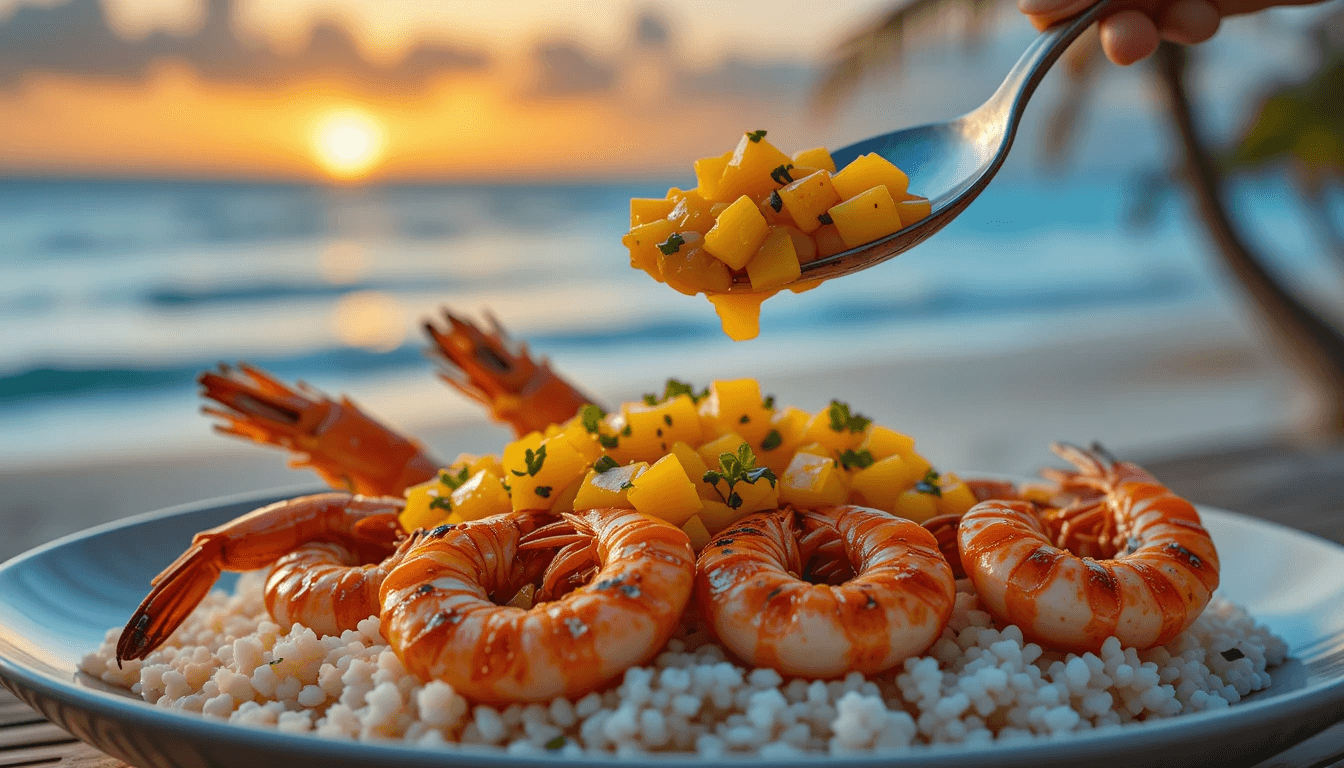FISH FOOD RECIPE: NOURISH YOUR AQUATIC PETS WITH HOMEMADE CARE is a simple, budget-friendly way to control the quality of ingredients you feed your fish. You can customize each batch according to species needs and personal preference. By following a reliable fish food recipe, you’ll provide balanced nutrition while enjoying the satisfaction of making something fresh for your underwater companions.
Introduction
Have you ever wondered what it takes to keep your fish happy, healthy, and vibrant? Whether you’re a new aquarium owner or a seasoned enthusiast, creating a fish food recipe at home can be a game-changer.
Not only does homemade fish food let you tailor ingredients to suit specific dietary needs, but it also gives you peace of mind, knowing exactly what your aquatic friends are eating.
There’s something genuinely rewarding about whipping up a fish food recipe in your own kitchen.
It can evoke a sense of pride as you watch your fish excitedly swim to the surface, eager to devour the meal you carefully crafted.
This practice also helps you save money in the long run, avoiding the cost of premium commercial feeds that may have fillers or artificial additives. At the same time, a well-researched, carefully prepared fish food recipe can align with the nutritional recommendations put forth by professionals (e.g., the American Veterinary Medical Association and fish nutrition experts).

Why a Homemade Fish Food Recipe Matters
Benefits of a Personalized Fish Food Recipe
A homemade fish food recipe offers many advantages over store-bought feeds. The most notable benefits include:
- Control Over Ingredients: You can choose only the freshest, highest-quality items, ensuring no hidden additives or unnecessary fillers.
- Cost-Effective: While some commercial feeds can be pricey, sourcing your own ingredients can be more affordable, especially in bulk.
- Species-Specific Nutrition: Certain fish species thrive on high-protein diets, while others do best with plant-based meals. With a custom fish food recipe, you can cater to each species’ needs.
- Reduced Risk of Contaminants: When you pick your ingredients carefully, you lower the chances of introducing harmful substances.
- Greater Satisfaction: It’s simply fulfilling to see your fish flourish on a meal you’ve prepared.
Many aquarists discover that after switching to a homemade fish food recipe, their fish display improved coloration, increased energy, and higher immunity. In fact, a study cited by the National Institute of Food and Agriculture (NIFA) suggests that fresh, varied diets can bolster fish resilience against common diseases. Although this does not guarantee disease prevention, combining good water quality and proper feeding is a giant step toward a healthier aquarium ecosystem.
Understanding Basic Fish Nutrition
Before diving into an actual fish food recipe, it’s important to know why certain ingredients should be included, while others might be optional or even harmful.
Protein: The Building Block
Protein is often considered the cornerstone of a fish food recipe because fish need ample protein to support muscle growth, tissue repair, and overall health. Depending on species, the protein requirement might range from 30% to 50% of the total diet. Carnivorous fish such as bettas and certain cichlids tend to need higher protein levels, while herbivorous or omnivorous fish like goldfish or certain tetras may do well with moderate amounts.
Sources of Protein
- Fish Meal: Often the core protein source in commercial feeds.
- Seafood (Shrimp, Clams, Mussels): A fresh alternative for your homemade fish food recipe, offering high-quality protein and essential amino acids.
- Worms and Insects: Bloodworms or black soldier fly larvae are commonly found in fish diets, adding diversity and appealing to natural feeding instincts.
When selecting protein sources for your fish food recipe, look for high-quality, fresh items without preservatives. You should also watch out for any potential pathogens—when dealing with raw seafood, always ensure safe handling and preparation.
Carbohydrates: Energy and Fiber
Carbohydrates may not be as crucial for fish as they are for humans, but they still offer energy and can aid in digestion. In a balanced fish food recipe, carbs can come from plant materials such as spinach, peas, or algae. However, fish have varying abilities to digest carbohydrates, so it’s best to keep them in moderate amounts.
For example, some herbivorous fish benefit from fiber-rich plant matter, while strict carnivores typically need minimal carbs. Strike a balance that aligns with your fish’s natural dietary habits.
Fats: Essential Fatty Acids
Fats are vital for fish as they provide energy and support metabolic functions, hormone regulation, and healthy coloration. Certain fatty acids (like omega-3 and omega-6) are particularly important. In your fish food recipe, you might derive these from oily fish, small amounts of fish oil, or certain seeds—though seeds are more commonly associated with terrestrial animal diets.
Still, it’s best to avoid overdoing fats, as it can lead to water pollution (cloudiness and increased waste) and potential health issues in fish. Always remember that feeding frequency, portion size, and tank conditions all interact with how fish utilize dietary fats.
Vitamins and Minerals
Fruits and vegetables offer vitamins A, C, E, and K, while certain grains and seaweeds provide necessary minerals like iron and calcium. Many aquarists like to blend small amounts of vitamin supplements—designed specifically for aquarium use—into their fish food recipe. That said, rely mainly on whole-food ingredients since they’re generally more bioavailable.
A deficiency in vitamins or minerals can compromise your fish’s immune system, hamper growth, or cause color to fade. Strive for a varied diet that includes multiple sources of vitamins and minerals.

Factors to Consider Before Making a Fish Food Recipe
Fish Species and Their Natural Diets
A goldfish’s diet differs significantly from that of a saltwater angelfish. Therefore, your fish food recipe should be tailored to your specific fish species or a general group if you have a community tank. For instance:
- Carnivorous Species: Focus on protein-rich elements (shrimp, fish fillets, bloodworms).
- Omnivorous Species: Combine protein sources with plant materials (peas, spinach, spirulina).
- Herbivorous Species: Emphasize leafy greens, algae, and vegetables.
Research your fish’s natural diet in the wild. Then replicate that dietary profile in your homemade fish food recipe. This approach often leads to better acceptance of the food and improved health outcomes.
Tank Size and Filtration
Overfeeding, or feeding overly rich concoctions, can quickly foul your tank water. If your filtration system is not robust or your tank is relatively small, you’ll need to be extra cautious about feeding homemade fish food. While a balanced fish food recipe can encourage optimal health, leftover uneaten food can break down, spike ammonia levels, and harm your fish.
Keep track of water parameters, conduct regular partial water changes, and monitor how quickly your fish consume the homemade feed. Adjust portion sizes or feeding frequencies as necessary.
Health Conditions and Veterinary Advice
Always keep an eye out for special dietary concerns. If a fish is showing signs of illness, a specialized fish food recipe might be needed for convalescence. For instance, certain medicated foods or easily digestible blends can be recommended by a fish veterinarian.
Remember that any suggestions in this article are strictly for informational purposes and do not replace professional veterinary advice. Consult a qualified professional if your fish exhibits ongoing health issues or feeding problems.
Crafting a Basic Fish Food Recipe: Essential Ingredients
Below is a general framework for a balanced fish food recipe that you can modify according to your specific fish species. The quantities are approximate and can be tweaked.
| Ingredient | Approximate Proportion | Notes |
|---|---|---|
| Fish/Seafood (shrimp, tilapia) | 30-50% | High-quality protein source; ensure freshness. |
| Vegetables (spinach, peas) | 20-30% | Provide vitamins, minerals, and fiber. |
| Gel Binder (unflavored gelatin) | As needed | Holds the mixture together; adjust based on desired consistency. |
| Optional Algae/Spirulina | 10-15% | Adds more vitamins, minerals, and color-enhancing pigments. |
| Supplements (vitamins) | Minimal | Use fish-specific supplements if needed; consult reliable fish care references. |
Protein Sources
When designing your fish food recipe, you might select:
- Raw Shrimp: Peel, devein, and chop into small pieces.
- White Fish Fillets: Tilapia or cod can be ideal due to mild flavor and fewer oils.
- Bloodworms or Insect Larvae: Great for species that thrive on live or frozen insects.
Try to incorporate variety. A combination of shrimp and fish fillets, for example, can broaden the amino acid profile and reduce the risk of boredom or refusal from picky eaters.
Vegetables and Plant Matter
Even carnivorous fish can benefit from trace vitamins found in plant materials. Consider lightly blanching spinach, zucchini, carrots, or peas to soften their texture and make them easier to digest. If your fish are primarily herbivores, increase the plant portion in your fish food recipe and reduce the animal protein accordingly.
Binding Agent (Gelatin)
Unflavored gelatin or agar-agar helps bind your ingredients together into a more cohesive product. This can be formed into cubes or thin sheets that hold up longer in the tank, reducing mess. When you feed your homemade fish food recipe in gel form, it typically floats for a while before slowly sinking, allowing fish at different tank levels a chance to feed.
Step-by-Step Guide: Creating a Homemade Fish Food Recipe
Follow these instructions for a simple yet nutritious fish food recipe that suits a wide range of freshwater and some saltwater species.
- Gather Ingredients: Prep your protein sources (e.g., shrimp, fish fillets). Rinse and chop them. Similarly, wash and chop vegetables like spinach or peas.
- Blend or Process: Using a food processor, blend proteins and vegetables until you achieve a paste-like consistency. This ensures even distribution of nutrients in your fish food recipe.
- Add Algae or Spirulina (Optional): If desired, sprinkle in some spirulina powder or finely chopped seaweed. This step enhances color vibrancy and nutrient density.
- Prepare Gelatin or Agar: Follow the instructions on the packaging to dissolve your gelatin or agar in warm water. Avoid any flavored versions, as these can contain sugars or additives harmful to fish.
- Combine and Cool: Gently stir the gelatin mixture into the blended ingredients. Pour this mix into a shallow tray or ice cube molds. Once cooled, the gel will solidify, creating your fish food recipe in a stable form.
- Cut and Store: If you used a tray, slice the gel into small cubes or thin strips. Store these portions in airtight containers or freezer bags. Keep them in the fridge if you plan to use them within a few days, or freeze for longer storage (up to several weeks).
Pro Tip: Freeze the bulk of your fish food recipe and thaw only the amount you’ll need for a week. This helps preserve freshness, reduces waste, and ensures your fish always get high-quality meals.
Feeding Guidelines: How Much and How Often
Observe Your Fish’s Appetite
Each fish species has different feeding habits. For instance, some fish are grazers and nibble constantly, while others prefer one or two substantial meals per day. Regardless, a good rule of thumb is to feed only what your fish can consume within 2-3 minutes. Excess food should be removed to prevent water contamination.
Adjust Based on Activity Level and Water Temperature
Warmer water temperatures generally speed up fish metabolism, causing them to require more frequent or slightly larger feedings. Conversely, in cooler waters, fish might become more sluggish and need less food. Keep an eye on uneaten portions; leftover food is a clear sign to either decrease the quantity or revisit the composition of your fish food recipe.
Monitor Health and Growth
If your fish appear lethargic, lose color, or display unusual behaviors, it could be a sign that something is off nutritionally or in water quality. Perform regular water tests for ammonia, nitrite, nitrate, and pH. If all parameters are normal and your fish still exhibit poor health, consult a veterinarian for personalized advice on refining your fish food recipe or adjusting your husbandry practices.
Special Considerations for Different Types of Fish
Goldfish and Koi
Goldfish and koi are often considered the “beginners’ fish,” but they still require thoughtful nutrition. These species tend to enjoy a plant-heavy diet, so a homemade fish food recipe for them might include ample vegetables—peas, spinach, lettuce, or algae. They also appreciate some protein, though in moderation. Overfeeding these fish can lead to serious issues like swim bladder disorder, so be cautious with portion sizes.
Tropical Freshwater Fish
Popular tropical fish, such as tetras, guppies, and mollies, typically enjoy a balanced omnivorous diet. When creating a fish food recipe for them, aim for around 40% protein and 30% plant matter, with the remainder made up of natural binders or vitamins. You can also occasionally treat them with daphnia or brine shrimp to mimic their natural feeding patterns.
Betta Fish
Bettas are carnivorous by nature and thrive on protein-rich foods. A betta-focused fish food recipe can include lean meats like shrimp, tilapia, and some insects or larvae. While bettas may nibble on certain plant materials, keep any vegetable content minimal. Overfeeding a betta can quickly contaminate the water in a small bowl or tank, so maintain caution.
Saltwater Fish
Saltwater fish diets can vary tremendously. Reef-safe species may need specialized nutrients, particularly those that come from marine algae or brine shrimp. Always research the needs of your specific saltwater fish before finalizing your fish food recipe. Some fish might require additional marine-based vitamins or a stronger focus on shellfish proteins.
Live Foods: Are They Necessary?
Live foods—such as brine shrimp, daphnia, or even live worms—provide stimulation and mimic a fish’s natural feeding environment. While not strictly necessary for every fish food recipe, incorporating live foods occasionally can encourage healthy behavior, such as hunting or foraging.
Pros of Live Foods
- High Nutritional Value: Fresh and unprocessed.
- Entices Picky Eaters: Many fish find live prey irresistible.
- Mimics Natural Habits: Stimulates foraging and hunting instincts.
Cons of Live Foods
- Disease Transmission: Live foods can carry parasites or bacteria.
- Short Shelf Life: Requires immediate use or special holding tanks.
- Ethical Considerations: Some aquarists are uncomfortable with feeding live organisms.
If you decide to incorporate live foods, ensure you source them from reputable dealers and quarantine if possible. Alternatively, you can cultivate your own supply of live foods at home in separate containers, although this may require extra time and space.
Practical Tips and Common Mistakes
Overfeeding or Underfeeding
One common error with a fish food recipe is offering too much or too little. Fish generally only need small amounts of food at each feeding, especially if they eat multiple times a day. Excess food can harm water quality, leading to stress and disease.
Not Freezing Properly
If you fail to freeze the homemade fish food recipe in airtight containers, it can degrade faster than expected. Nutrient loss and spoilage are real concerns. Make sure to label and date your containers. Discard any prepared food that has been in the freezer for more than a few months, as the nutritional profile might diminish over time.
Ignoring Species-Specific Needs
A single fish food recipe is unlikely to fit every fish under the sun. Do your research regarding the dietary habits of the fish in your aquarium. Ignoring specialized needs—for example, certain cichlids that require more insect-based proteins—can lead to malnutrition or stunted growth.
Skipping Variety
Even the best homemade recipe can become monotonous if fed exclusively. Try rotating different fish food recipe variations or occasionally supplementing with quality commercial feeds to provide diverse nutrients. This approach also reduces the risk of any single nutritional gap causing long-term issues.
Frequently Asked Questions
1. What is the best homemade food for fish?
A balanced fish food recipe with fresh protein like shrimp or fish fillets, plus vegetables such as spinach, often works best. Tailor ingredients to your fish’s dietary needs. This variety ensures essential nutrients and keeps your fish active and healthy.
2. How to make your own fish feed?
Start by blending protein (like raw shrimp) with veggies (like peas), then mix in gelatin as a binder. This homemade fish food recipe can be molded into cubes or sheets. Chill or freeze it for easy storage and feeding.
3. How to make live food for fish?
You can raise brine shrimp, daphnia, or worms in separate containers to provide fresh, protein-packed meals. Although not a classic “fish food recipe,” live cultures mimic natural feeding. Always ensure they’re disease-free before introducing them to your aquarium.
4. What makes a good fish food?
A good fish food recipe has balanced protein, healthy fats, and essential vitamins. It avoids harmful fillers or preservatives. The focus is on fresh, natural ingredients tailored to your fish’s species-specific needs.
Key Points
- Balanced Nutrition: A solid fish food recipe combines quality protein, plant matter, and essential vitamins.
- Species-Specific: Know your fish’s dietary habits and adapt recipes accordingly.
- Proper Storage: Freeze homemade food in airtight containers to preserve freshness.
- Observation: Monitor fish behavior and health to fine-tune feeding amounts and frequency.
- Variety: Even with a great fish food recipe, rotate different feeds or supplement with commercial options.
Conclusion
Creating a fish food recipe at home can deepen your relationship with aquarium care, giving you more control and confidence in your fish’s diet. By focusing on balanced nutrition, safe handling, and species-specific needs, you’re taking proactive steps to support the health and longevity of your aquatic companions. Whether you raise lively tropical fish or peaceful goldfish, the time you invest in devising and perfecting a homemade fish food recipe will pay dividends in their vibrant coloration, playful activity, and overall well-being.
Above all, keep in mind that every fish is unique. Monitor your tank regularly, consult with aquatic experts when needed, and adjust your approach as you learn more about your fish’s preferences. Feel free to share your experiences or questions in the comments—your insights may help fellow aquarists refine their fish food recipes, too!

